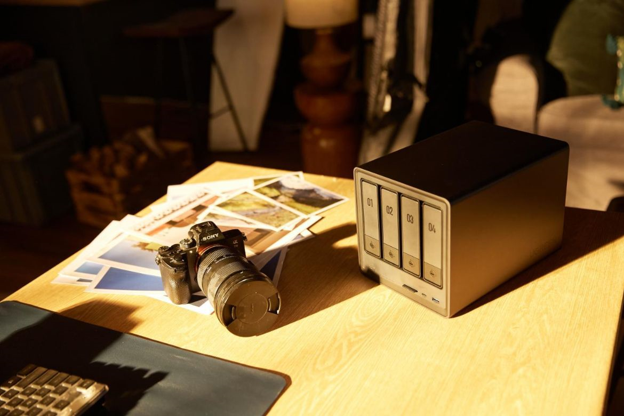You might have heard about NAS storage, which provides users with a flexible and convenient way to store, manage, and access data remotely. However, did you know that these same systems use RAID technology to protect the data, enhance overall performance, and provide redundancy?
If you came to this article because you heard about RAID configurations in NAS systems and wanted to learn more about them, then you have landed on the right page. Hop on below to read a detailed guide on RAID configurations in Network Attached Storage and factors to consider when choosing them.
Understanding RAID
RAID—also known as Redundant Array of Independent Disks—is a technology that combines several different physical drives into one logical unit. The main purpose of RAID is to provide better data redundancy and performance.
There are different RAID levels or configurations, and each one provides distinct benefits. So, selecting the right RAID configuration for yourself depends on factors like performance needs, storage capacity, and the tolerance for data loss.
Common RAID Configurations
There are multiple RAID configurations present, each of which provides different benefits. We have them listed below for you:
RAID 0 (Striping)
RAID 0 is a type of configuration where data is divided into blocks and spread across multiple drives. This particular setup is known to enhance reading and writing speeds because the data is accessed from different disks at the same time. However, RAID 0 also provides no data redundancy, and even if a single drive fails, all data within the array gets lost.
RAID 1 (Mirroring)
RAID 1 is known to mirror data across two drives, which means that an exact replica of the data would be stored on each disk. This means that this RAID configuration is quite excellent when it comes to providing redundancy because the system will continue to work even if one drive fails. However, the drawback of this configuration is that it does not enhance performance and effectively halves the storage capacity because the data is already duplicated.
RAID 5 (Striping with Parity)
RAID 5 is a configuration that offers the perfect balance between redundancy and performance. It strips the data across multiple disks with the parity data distributed between the many drives.
All this allows the system to build up the lost data again in case of a single drive failure. While all this is great, RAID 5 needs at least three disks and provides good storage because only one drive’s space is used for parity. However, this configuration also has a slower writing speed because of the parity calculations, and it can take time to rebuild the data after a drive failure occurs.
RAID 6 (Striping with Double Parity)
While quite similar to RAID 5, this particular configuration comes with an extra layer of parity. Hence, a RAID 6 configuration can allow for two drives to fail without data loss. This makes RAID 6 quite a secure option for cases where data protection is crucial.
This RAID requires four disks and provides a good balance of storage efficiency and redundancy. However, it also has slower write performance and less efficient storage space use compared to the RAID 5 configuration.
RAID 10 (Striping and Mirroring)
The RAID 10 configuration is also called RAID 1+0 because it combines RAID 1 and 0. This form of configuration offers the redundancy of RAID 1 along with the performance advantages of RAID 0.
In this configuration, the data is mirrored across more than two drives, and then each of the mirrored drive sets is striped. RAID 10 requires at least four drives (even numbers) and is quite efficient in its performance and redundancy. However, this form of RAID is also quite expensive.
Factors to Consider When Choosing a RAID Configuration
There are several factors one must consider when they are choosing a RAID configuration for their NAS storage. Some of the essential ones are:
- Performance Needs vs. Data Redundancy Requirements
Different people have different priorities when it comes to their NAS systems. If your preference is speed, then you may want to choose the RAID 0 configuration. However, keep in mind that it doesn’t have any redundancy. For those looking into data protection, RAIDs 1,5, 6, or 10 might provide different degrees of redundancy.
- Number of Drives Available and Budget Considerations
The RAID configuration is also chosen based on the number of drives it requires. For example, RAID 0 and 1 usually support at least two drives RAID 5 requires at least three, RAID 6 supports at least 4, and 10 also requires at least four but in even numbers. The more drives there are, the more the overall cost would be, along with the constant need for additional potential hardware controllers.
- Specific Use Cases for Different RAID Levels
You need to take into consideration the use or application of your Network Attached Storage. RAID 0 usually suits environments that require high performance and speed, such as video editing. RAID 1 is quite efficient for home users who prioritize data security, whereas RAID 5 and 6 are used in businesses and by individuals to maintain balance, cost efficiency, and redundancy. Configuration ten suits high-performance enterprise scenarios that need maximum security.
Recommended UGREEN NAS Models
Now that you understand how you can choose the best RAID configuration for your NAS systems, we are sure you’ll be out on a hunt to purchase the best NAS models for yourself. If that is the case, then we suggest you look into the exceptional UGREEN NAS Models we have mentioned below:
- UGREEN NASync DXP2800

The first one on our list is the UGREEN NASync DXP2800. This NAS model is equipped with a 12th-generation, 4-core, 4-thread Intel processor that enhances overall performance and allows for the downloading of individual applications for different functionalities all in one place. This NAS model has two SATA and two M.2 NVMe drive bays, making the Network Attached Storage hold a storage capacity of 52TB.
- UGREEN NASync DXP4800

The UGREEN NASync DXP4800 is another great addition to our list. Its same 12th Gen, 4-core, 4-thread Intel processor increases overall performance. However, unlike its previous counterpart, this NAS model holds a storage capacity of 96TB.
- UGREEN NASync DXP4800 Plus

With its 12th Gen, 5-core, 6-thread Intel® Pentium, Gold Processor, and four SATA and two M.2 NVMe drive bays, the UGREEN NASync DXP4800 Plus provides its users with a maximum storage capacity of 96TB.
Conclusion
If you want to explore the RAID configurations in NAS systems, we hope this article sheds light on all the important details. While we tried to include everything from the different RAID configurations to the factors that go into selecting the RAID type, the NAS storage manufacturer also plays a crucial role. So, for the best NAS storage systems, we suggest you check out UGREEN.


